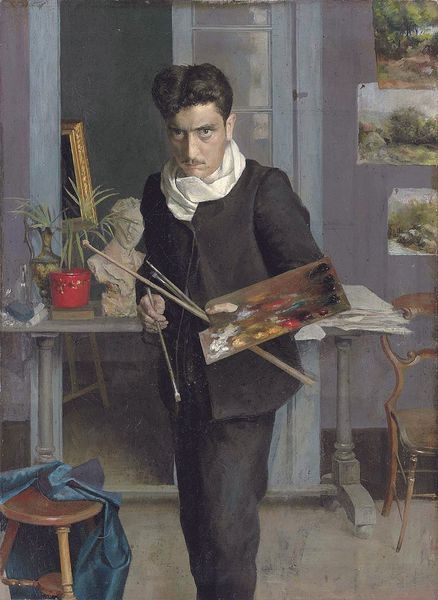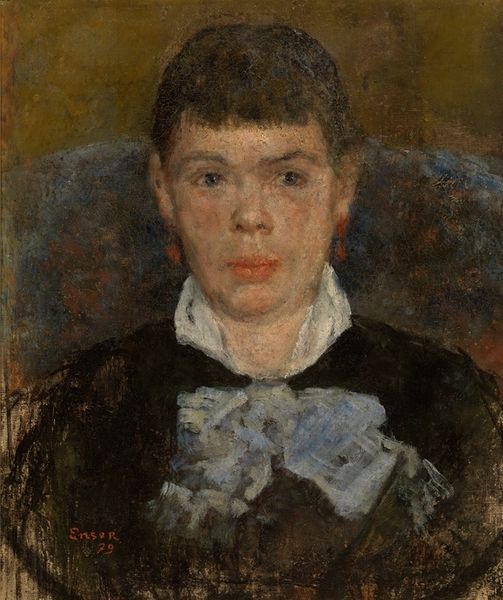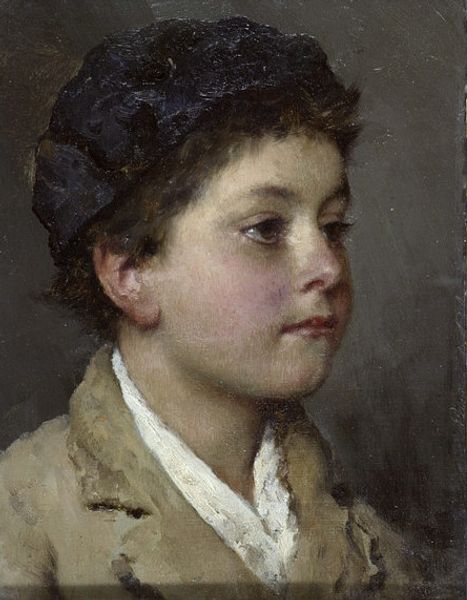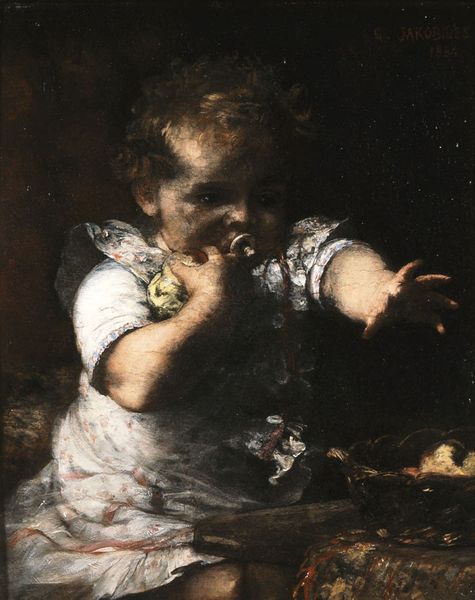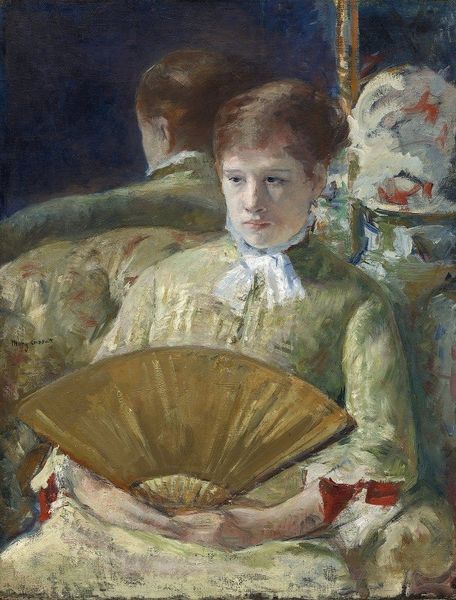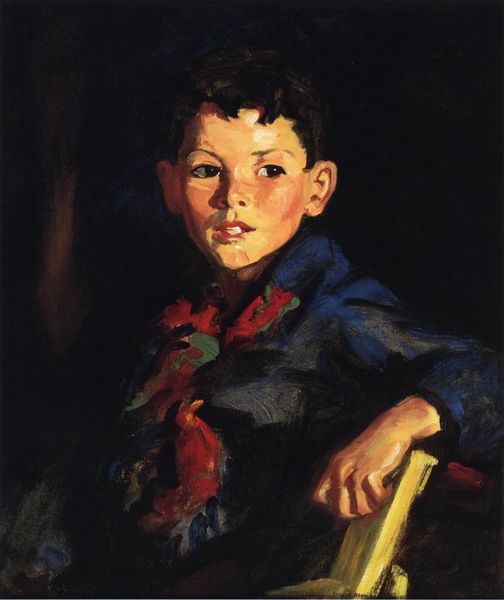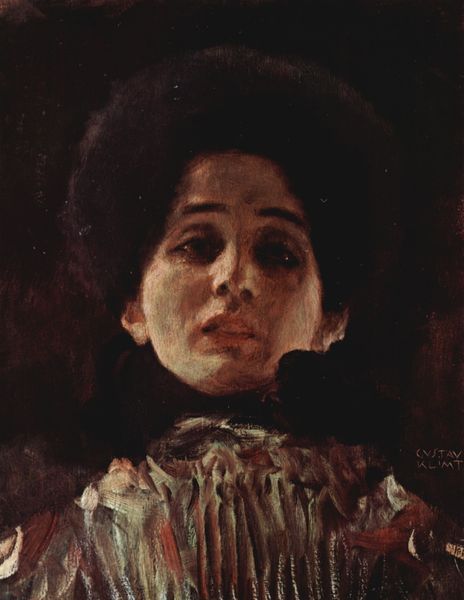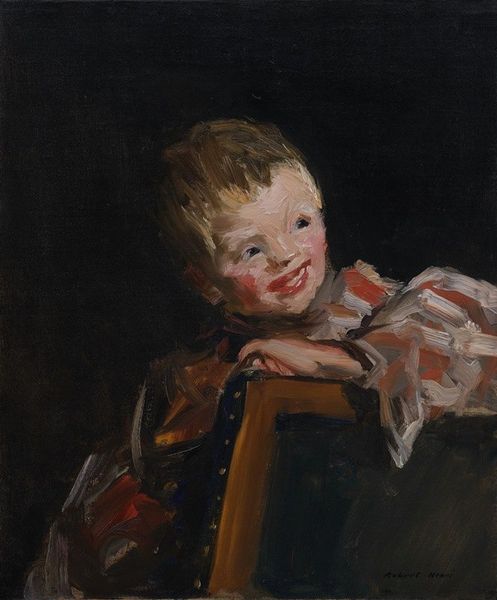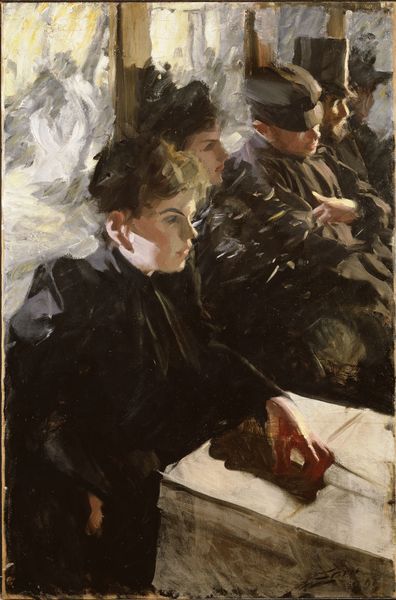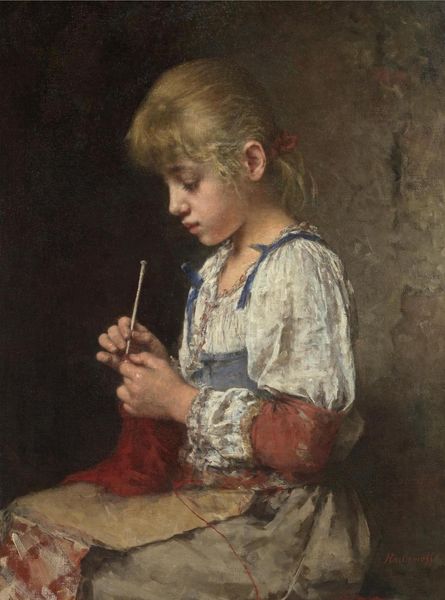
Copyright: Public domain
Editor: Here we have Antonio Mancini’s “Boy with Toy Soldiers,” painted in 1876 using oil on canvas. There’s something both charming and melancholy about it, don't you think? He seems caught between innocence and some heavier, perhaps even militaristic world. What catches your eye when you look at it? Curator: It's fascinating to consider this piece within the context of its time. The late 19th century was a period of intense nation-building and military fervor in Europe. So, how does Mancini, and by extension, Italian society, represent childhood, power, and aspiration through imagery intended for public viewing? Editor: That’s interesting; it hadn’t occurred to me that these weren't simply the playthings of an upper-class child. It speaks to something larger, like societal conditioning? Curator: Precisely. Consider the stage-like presentation and formal attire. Mancini subtly suggests how societal expectations and the glorification of war are being imposed on this child. Is this merely an innocent portrait, or is Mancini commenting on how power structures replicate themselves through generations, shaping the worldview of even the young? Also, notice how his skin almost merges with the brown canvas—was this intentional to create contrast? Editor: So it’s not just a snapshot of childhood, but perhaps a critique of the societal forces that shape a young boy’s understanding of the world? He's trapped almost—you can almost feel this by looking at the canvas itself? Curator: Yes. Think about the role of art institutions then, like the Salons. By displaying such work, were they perpetuating a certain vision of masculinity and national pride? Or could it be interpreted as subtly unsettling, perhaps even cautionary, to viewers attuned to these themes? Editor: I hadn't thought of it like that! Looking at it now, it’s like the boy is a symbol of something larger, carefully arranged and presented for a public that expected its boys to become soldiers. Thanks for untangling all that! Curator: It is vital to read images not only for their aesthetic qualities but for what they reveal about the power dynamics of their time. This really gives us much to think about, doesn't it?
Comments
No comments
Be the first to comment and join the conversation on the ultimate creative platform.

